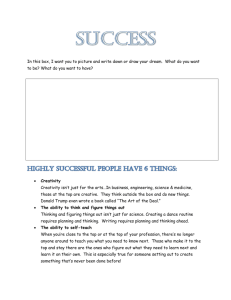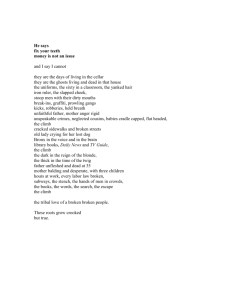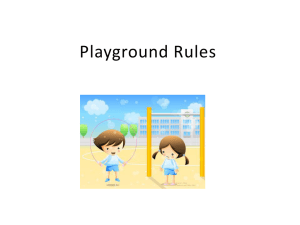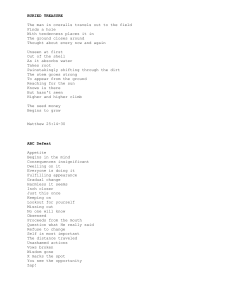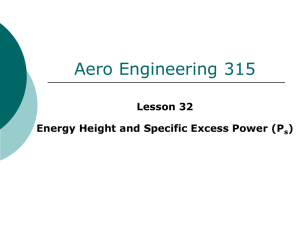Quiz 6 Worksheet
advertisement
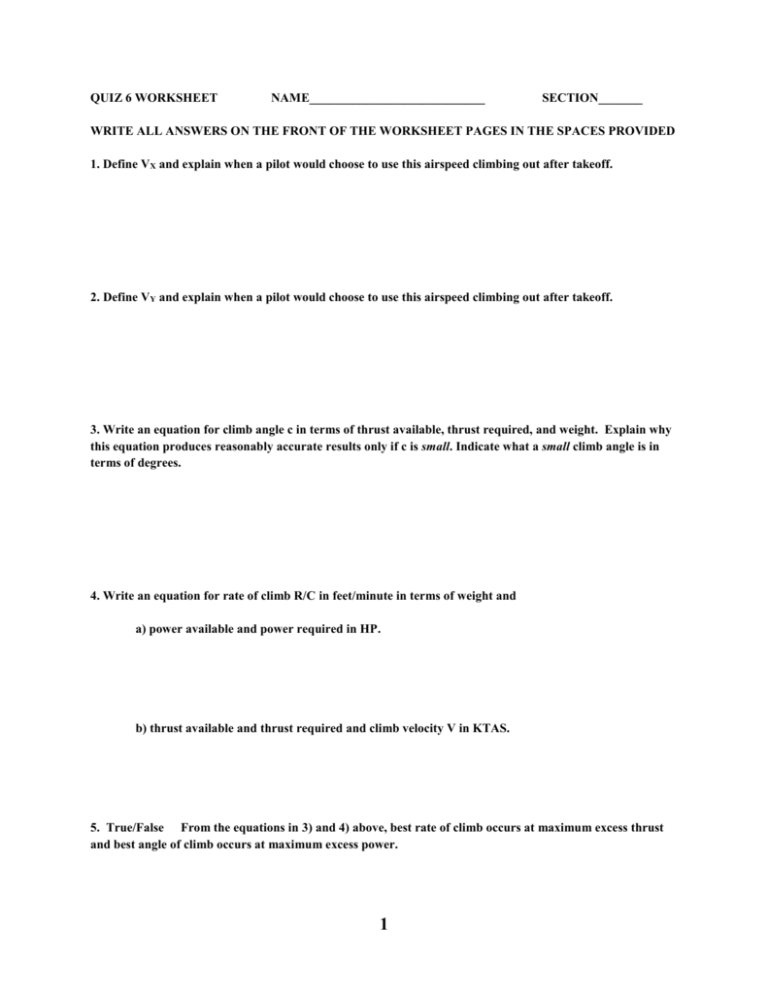
QUIZ 6 WORKSHEET NAME____________________________ SECTION_______ WRITE ALL ANSWERS ON THE FRONT OF THE WORKSHEET PAGES IN THE SPACES PROVIDED 1. Define VX and explain when a pilot would choose to use this airspeed climbing out after takeoff. 2. Define VY and explain when a pilot would choose to use this airspeed climbing out after takeoff. 3. Write an equation for climb angle c in terms of thrust available, thrust required, and weight. Explain why this equation produces reasonably accurate results only if c is small. Indicate what a small climb angle is in terms of degrees. 4. Write an equation for rate of climb R/C in feet/minute in terms of weight and a) power available and power required in HP. b) thrust available and thrust required and climb velocity V in KTAS. 5. True/False From the equations in 3) and 4) above, best rate of climb occurs at maximum excess thrust and best angle of climb occurs at maximum excess power. 1 6. True/False By definition, velocity for best angle of climb is never larger than velocity for best rate of climb, and the two velocities are equal only if best rate of climb and best rate of climb occur at the same airspeed. (Note: VX = VY is unlikely but theoretically possible.) 7. Convert 150 nm/hr to feet per minute. 8. For the following airplane at sea level in a standard atmosphere, calculate R/CMAX and the corresponding c, and cMAX and the corresponding R/C: 18,000# gross TA = 4800# thrust SL SA VX = 160 KEAS VY = 240 KEAS. DT at VX = 3,600# DT at VY = 3,900#. 9. With notes closed, draw a vector diagram illustrating why R/CMAX is greater than R/C at cMAX , even though the climb angle c at R/CMAX is smaller than cMAX. Be sure you understand what the vector diagram means; don’t just copy it from the lecture notes. 2 10. You have TAS vs. PR and PA plots for an airplane. What can you find from these plots—best angle of climb or best rate of climb? Explain how you would use the plots to extract information allowing you to calculate the answer you choose—best angle of climb or best rate of climb. What equation would you use to calculate your answer? 11. You have TAS vs. TR and TA plots for an airplane. What can you find from these plots—best angle of climb or best rate of climb? Explain how you would use the plots to extract information allowing you to calculate the answer you choose—best angle of climb or best rate of climb. What equation would you use to calculate your answer? 12. For the following airplane at sea level in a standard atmosphere, calculate R/CMAX and the corresponding c, and cMAX and the corresponding R/C: 5200# gross TA = 1,055# thrust SL SA VX = 88 KEAS VY = 140 KEAS. DT at VX = 675# DT at VY = 775#. 3 13. Write an equation for calculating time to climb in minutes from an initial altitude A I to a final altitude AF when R/C at AI and at AF is known. Use the symbol R/CI for rate of climb at the initial altitude and R/CF for rate of climb at the final altitude. Assume that R/C decreases linearly between the initial and final altitudes. 14. In problem 13, suppose the rate of climb at 1,000 feet is 800 feet/minute and the rate of climb at 10,000 feet is 225 feet/minute. Find the time to climb from 1000 to 10,000 feet in minutes and seconds. 15. Complete the tables for a B767 taking off at SL and climbing to FL 350, and for a B767 taking off at 4000 feet and climbing to FL350. Break release weight is 380,000#: T/O Elev SL SL SL SL Final Alt FL 350 FL 200 10,000’ 1,500’ Minutes # Fuel T/O Elev 4000’ 4000’ 4000’ Final Alt FL 350 FL 200 10,000 Minutes # Fuel 17) Using the data you produced in 15) above, complete the following table (show work): From SL – 1,500’ 1,500’ -10,000’ 10,000’ – 20,000’ FL 200 – FL 350 Minutes # Fuel Totals SL – FL350: minutes, # 4000’ – 10,000’ 10,000’ – 20,000’ FL 200 – FL 350 Totals 4000’ – FL350: minutes, 4 # 18) Explain why—in 15) and 16) above—the times to climb—to the nearest minute—did not change when takeoff elevation changed from SL to 6000’ but the fuel to climb did change. 19) Find B767climb EPR at 15,000’ with packs on at a total air temperature of 0o C. Show work if a calculation is involved: a) with wing and engine anti-icing off. b) with wing anti-icing on and engine anti-icing off. c) with engine anti-icing on and wing anti-icing off. d) with both engine and wing anti-icing on. 20. Estimate optimal cruising altitude for 250,000# gross if the optimal cruising altitude is FL350 for 200,000# gross. Your answer should be to the nearest thousand-foot flight level. Show work. 21. For the airplane in 20) above, estimate optimal cruising weight for FL 390. Show work. 5
